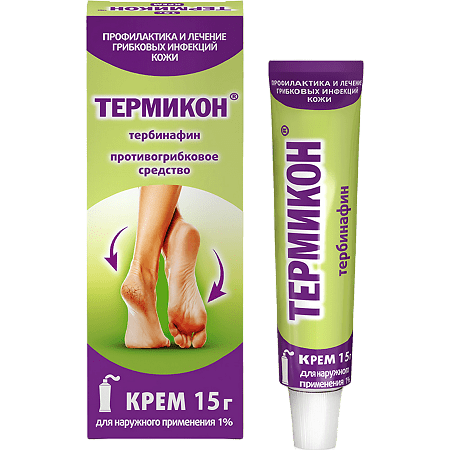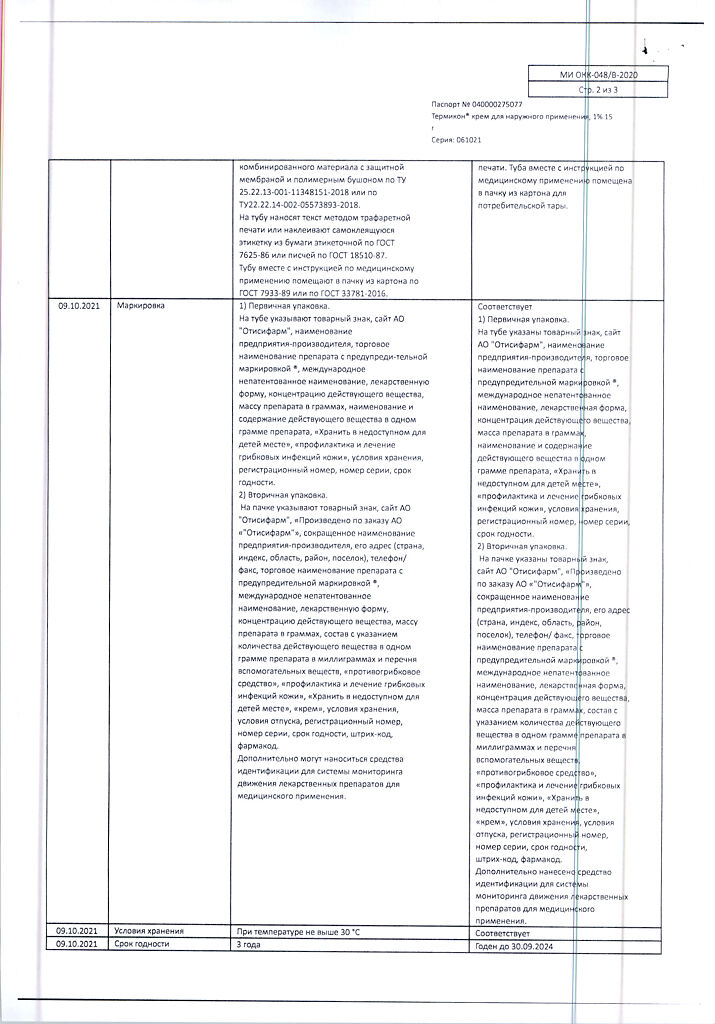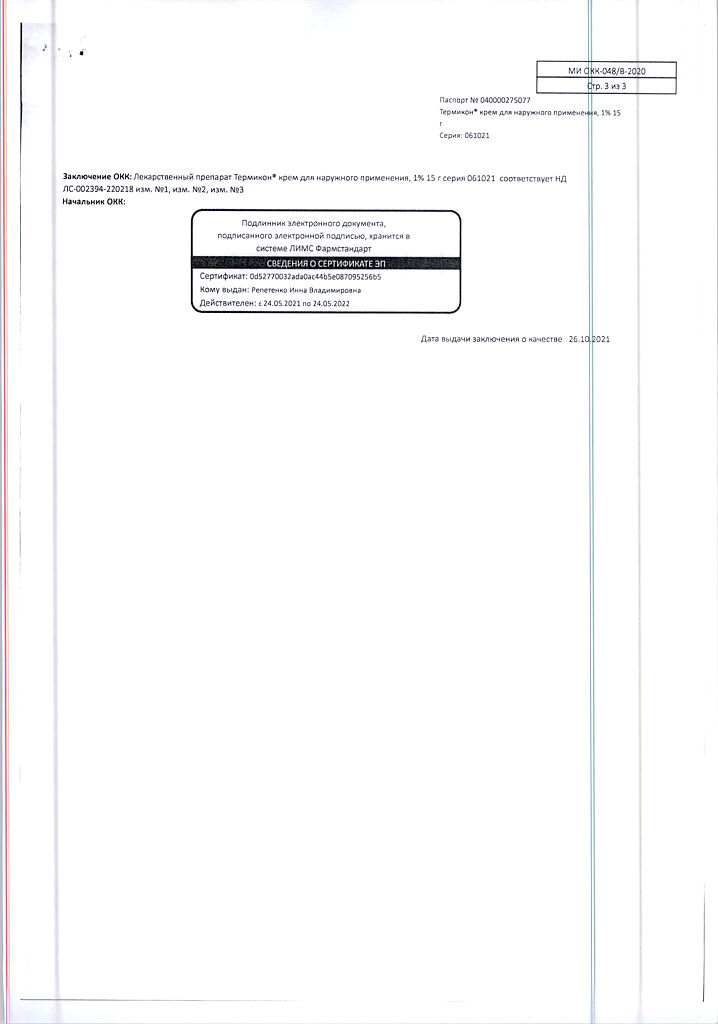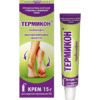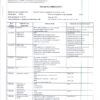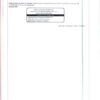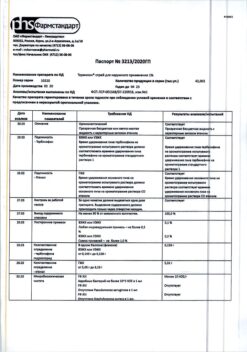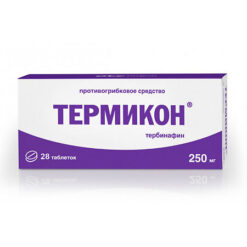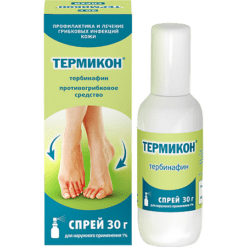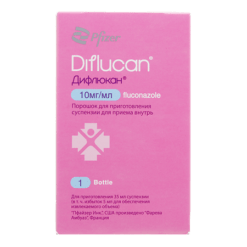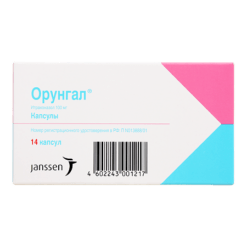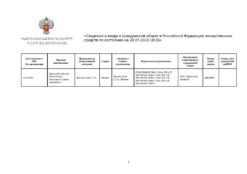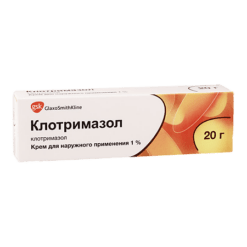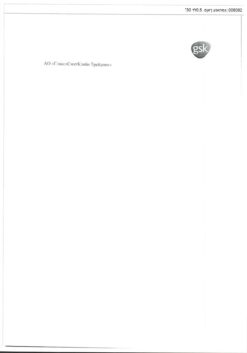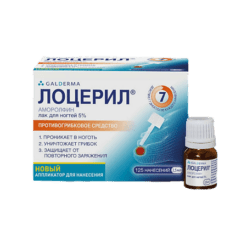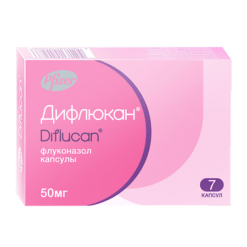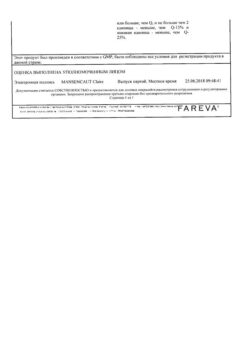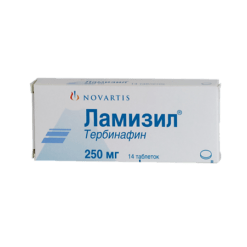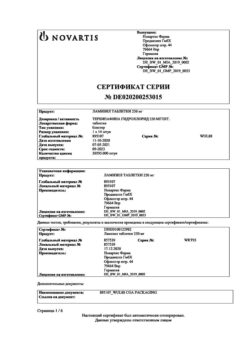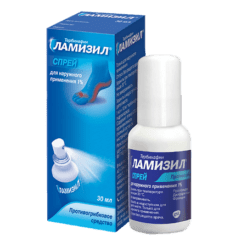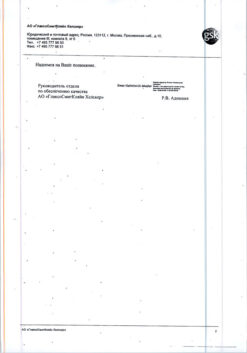No products in the cart.
Description
Antifungal drug for external use, which has a broad spectrum of antifungal activity. In low concentrations terbinafine has fungicidal effect against dermatophytes (Trychophyton rubrum, T.mentagrophytes, T.verrucosum, T.violaceum, T.tonsurans, Microsporum canis, Epidermophyton floccosum), molds (e.g. Aspergillus, Cladosporium, Scorpulariopsis brevicalius), certain dimorphs (Pityrosporum orbiculare) and yeasts (mainly Сandida albicans).
Activity against the remaining yeast fungi Candida spp., depending on their species, may be fungicidal or fungistatic.
Terbinafine specifically alters the early stage of sterol biosynthesis that occurs in fungi. This leads to ergosterol deficiency and intracellular accumulation of squalene, which causes cell death of the fungus. The action of terbinafine is performed by inhibiting the enzyme squaleneepoxidase located on the cell membrane of the fungus.
Terbinafine has no effect on the cytochrome P450 system in humans and, accordingly, on the metabolism of hormones or other drugs.
Pharmacokinetics.
In topical application absorption is less than 5%, has little systemic effect.
Indications
Indications
Prevention and treatment of fungal skin infections, including:
mycoses of the feet (“fungus” of the foot);
inguinal athlete’s foot;
fungal infections of smooth body skin;
Infections caused by yeast-like fungi of the genus Candida (candidiasis), in particular diaper rash;
Versicolor (pityriasis versicolor).
Pharmacological effect
Pharmacological effect
An antifungal drug for external use with a wide spectrum of antifungal activity. In low concentrations, terbinafine has a fungicidal effect against dermatophytes (Trychophyton rubrum, T.mentagrophytes, T.verrucosum, T.violaceum, T.tonsurans, Microsporum canis, Epidermophyton floccosum), molds (for example, Aspergillus, Cladosporium, Scorpulariopsis brevicalius), certain dimorphic (Pityrosporum orbiculare) and yeast fungi (mainly Candida albicans).
Activity against other yeast fungi Candida spp., depending on their type, can be fungicidal or fungistatic.
Terbinafine specifically alters the early stage of sterol biosynthesis occurring in fungi. This leads to ergosterol deficiency and intracellular accumulation of squalene, which causes the death of the fungal cell. Terbinafine acts by inhibiting the enzyme squalene epoxidase located on the cell membrane of the fungus.
Terbinafine does not affect the cytochrome P450 system in humans and, accordingly, the metabolism of hormones or other drugs.
Pharmacokinetics.
When applied topically, absorption is less than 5% and has a slight systemic effect.
Special instructions
Special instructions
A decrease in the severity of clinical manifestations is usually observed in the first days of treatment.
In case of irregular treatment or its premature termination, there is a risk of recurrence of infection.
Thermikon® is for external use only.
Avoid contact with eyes as it may cause irritation.
If the drug accidentally gets into the eyes, they should be immediately rinsed with running water, and if persistent irritation develops, you should consult a doctor.
If allergic reactions develop, the drug must be discontinued.
Active ingredient
Active ingredient
Terbinafine
Composition
Composition
1 g of cream contains:
Active substance: terbinafine hydrochloride – 10.0 mg
Excipients: cetyl alcohol and stearyl alcohol or cetostearyl alcohol – 80.0 mg, benzyl alcohol – 10.0 mg, cetyl palmitate – 20.0 mg, polysorbate 60 – 61.0 mg, isopropyl myristate – 80.0 mg, sorbitan stearate – 19.0 mg, sodium hydroxide – 1.2 mg, purified water – up to 1000.0 mg.
Pregnancy
Pregnancy
In experimental studies, the teratogenic properties of terbinafine were not revealed. To date, no malformations have been reported with the use of terbinafine cream.
However, since clinical experience with terbinafine cream in pregnant women is very limited, it should not be used unless absolutely necessary. During pregnancy, it is used only if the expected benefit to the mother outweighs the potential risk to the fetus. You should consult your doctor.
Terbinafine is excreted in breast milk, so
The drug should not be used by nursing mothers. Contact should not be allowed
baby with any surface of the skin treated with cream.
Contraindications
Contraindications
Hypersensitivity to terbinafine or to any component of the drug; breastfeeding period; children up to 12 years of age (for this dosage form).
With caution: liver and/or renal failure, alcoholism, suppression of bone marrow hematopoiesis, tumors, metabolic diseases, occlusive vascular diseases of the extremities.
Side Effects
Side Effects
Local reactions: redness, itching or burning sensation, and allergic reactions are possible at the sites where the cream is applied.
Interaction
Interaction
There are no data on drug interactions with Thermikon.
Overdose
Overdose
No cases of drug overdose have been reported. If Thermikon® is accidentally taken orally, you can expect to develop the same symptoms as with an overdose of tablets: headache, nausea, epigastric pain and dizziness.
Treatment: activated carbon, if necessary, symptomatic maintenance therapy.
Storage conditions
Storage conditions
Store at a temperature not exceeding 30 oC. Keep out of reach of children
place.
Shelf life
Shelf life
3 years.
Manufacturer
Manufacturer
Lecco CJSC, Russia
Additional information
| Shelf life | 3 years. |
|---|---|
| Conditions of storage | Store at a temperature not exceeding 30 oC. Keep out of reach of children. |
| Manufacturer | Lekko ZAO, Russia |
| Medication form | exterior cream |
| Brand | Lekko ZAO |
Other forms…
Related products
Buy Termicon, cream 1% 15 g with delivery to USA, UK, Europe and over 120 other countries.

